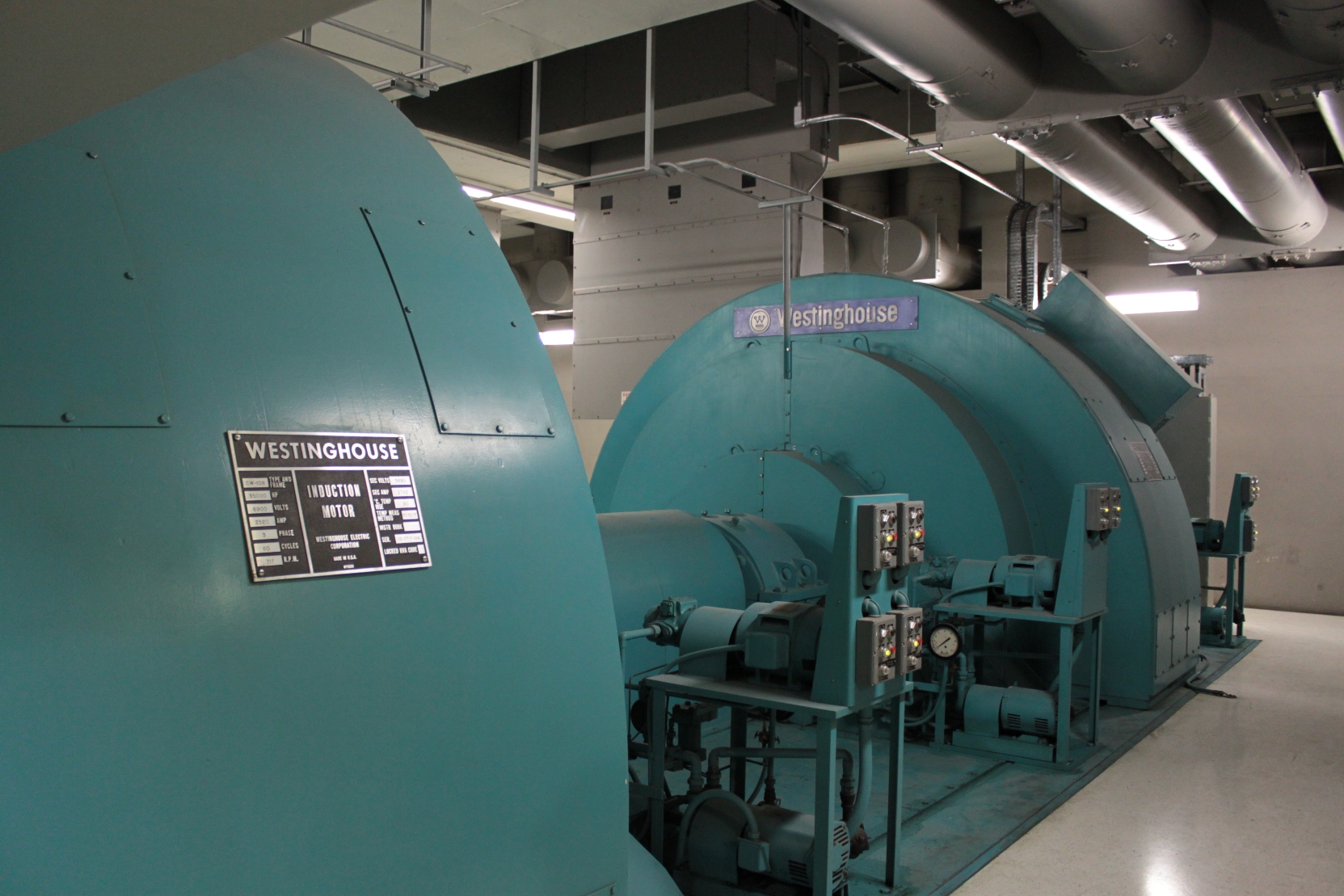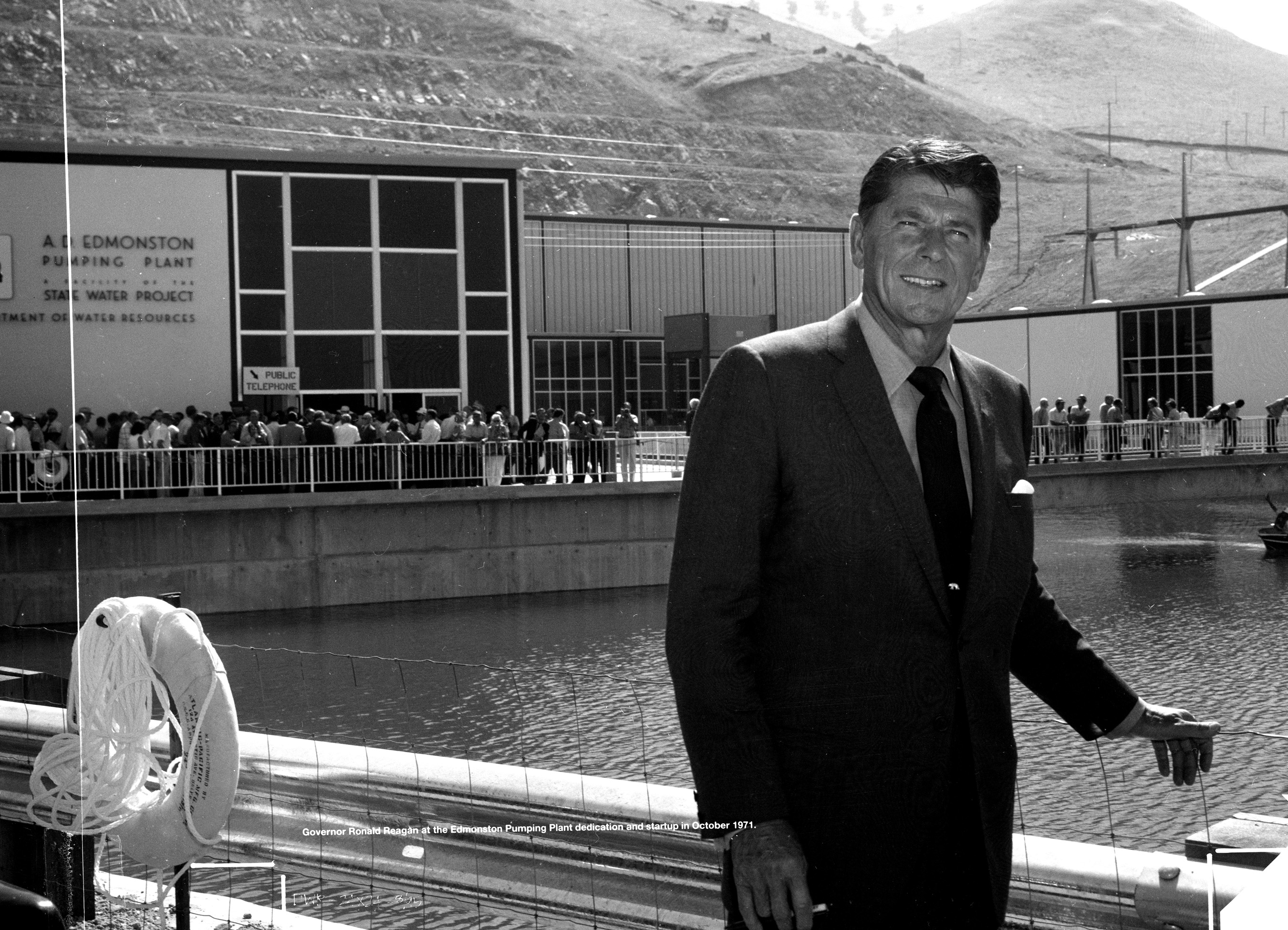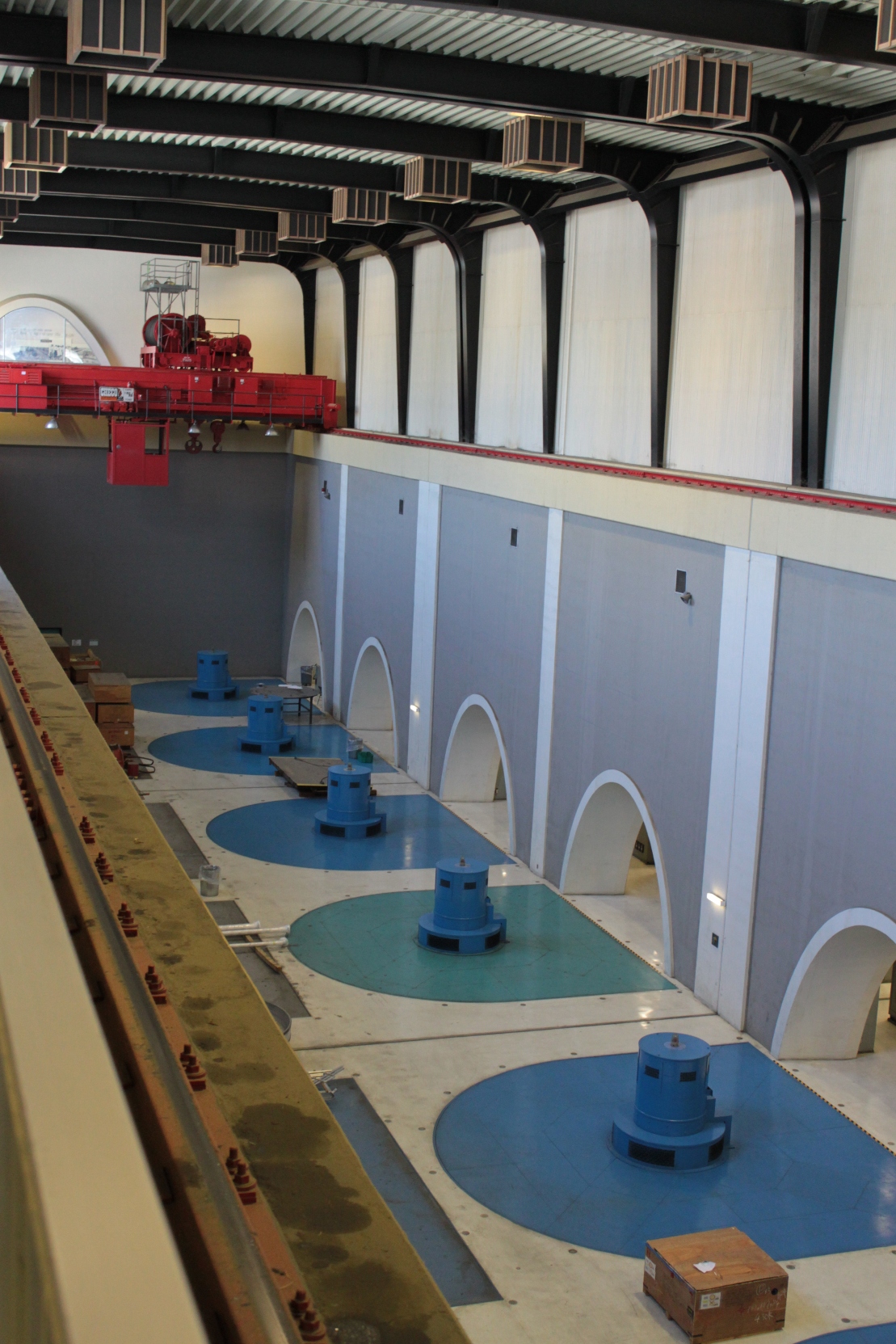The pumps that lift the California Aqueduct over the Tehachapis form the highest single lift pumping plant in the world. In April of this year, I had the pleasure of touring the facility on a Metropolitan Water District Inspection Tour.
Image may be NSFW.
Clik here to view.
Home page readers, click the “Read the rest of this page” link below to see the rest of this post.
Inside the lobby of the building is a diagram depicting how the water is moved over the Tehachapis. The pumps push the water nearly 2000 feet up the mountain where a series of tunnels and pipelines takes it across the mountains. The crossing traverses or paralells several major faults, including the San Andreas fault, so rather than build a deeper and shorter tunnel, the decision was made to keep the aqueduct closer to the surface to facilitate repairs in the event of an earthquake.
Image may be NSFW.
Clik here to view.
There are 14 4-stage 80,000-horsepower centrifugal pumps that push the water up to the top of the mountain.
Image may be NSFW.
Clik here to view.
Each motor-pump unit stands 65-feet high and weighs 420 tons. This is a picture of the top of the pumps; the pumps themselves extend downward six floors.
Image may be NSFW.
Clik here to view.
Each unit discharges water into a manifold that connects to the main discharge lines.
Image may be NSFW.
Clik here to view.
The two main discharge lines stair-step up the mountain in an 8400-foot long tunnel. They are 12.5 feet in diameter for the first half and 14-feet in diameter for the last half. They each contain 8.5 million gallons of water at all times. At full capacity, the pumps can fling nearly 2 million gallons per minute up over the Tehachapis.
Image may be NSFW.
Clik here to view.
At the top of mountain, there’s a 68-feet high, 50-foot diameter surge tank. This prevents tunnel damage when the valves to the pumps are suddenly open or closed. Near the top of the lift there are valves which can close the discharge lines to prevent backflow into the pumping plant below in event of a rupture. This picture is from the Department of Water Resources, but the lines drawn are mine. Notice that the pipelines are buried.
Image may be NSFW.
Clik here to view.
Let me take a moment to correct a common misconception…. Many people who travel the I-5 near the southern end of the San Joaquin Valley confuse the Chrisman Wind Gap facility (pictured below) for the Edmonston facility. The Chrisman Wind Gap facility, while certainly more visually impressive, only lifts the water 800 feet up; the lift at Edmonston is more than twice as high.
Image may be NSFW.
Clik here to view.
Okay, back to Edmonston, and it’s 14 pumps. When the pumps are started, they suck so much electricity that they can cause brown outs, so each motor is given a “soft-start”. The picture below is the Motor-Generator unit that starts up the pump. The pump’s motor is first connected to the Motor-Generator unit and accelerated up to speed and then synchronized to the power line before being switched over. If you want to know more about this procedure, click here. (See page 16, Section 3.4 if it doesn’t open up automatically to that page for you.) The pump motors are started in stages, one every 6 minutes.
Image may be NSFW.
Clik here to view.
The pumps at Edmonston use the most electricity in the State Water Project system, accounting for 45% of the SWP’s power use, so it’s no surprise there’s a power generating station nearby.
Image may be NSFW.
Clik here to view.
The four of the pumps have recently been replaced with new Hitachi pumps that are more efficient. Not sure they are any smaller, though … You can learn more about the new pumps by clicking here, or by clicking here.
Image may be NSFW.
Clik here to view.
The facility was completed in 1972. Then-Governor Ronald Reagan was on hand to open the facility. (Historical pictures courtesy of Department of Water Resources).
Image may be NSFW.
Clik here to view.
Image may be NSFW.
Clik here to view.
Here are a few other pictures I took on the tour:
Image may be NSFW.
Clik here to view.
These are the cable trays that run the electrical wires around the facility.
Image may be NSFW.
Clik here to view.
Here comes the water …
Image may be NSFW.
Clik here to view.
Note: The Edmonston Pumping Plant is located at the end of a private road and is not open to the public.
Image may be NSFW.
Clik here to view.
For more information on the Edmonston Pumping Plant and the California State Water Project:
- Check out this Popular Science magazine article from 1972 on the construction and opening of the State Water Project at Google books
- The State Water Project slideshow, produced by myself in conjunction with the Water Education Foundation